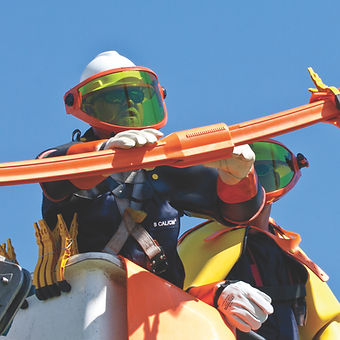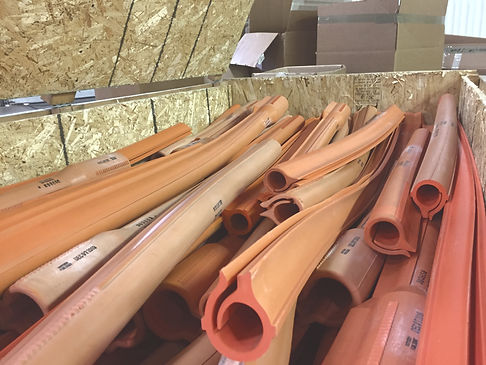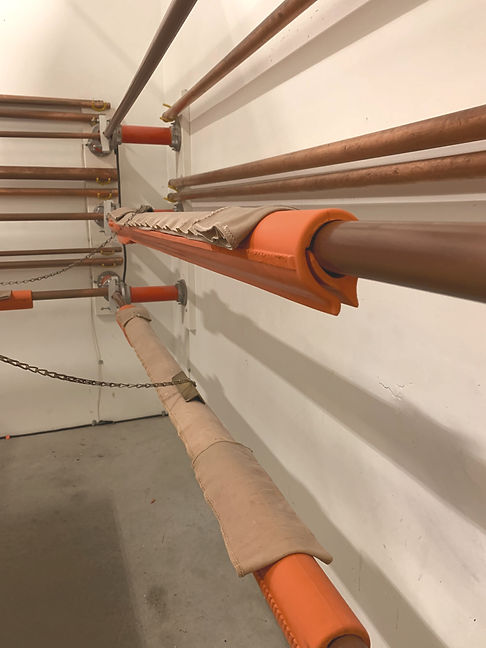Cover-up Testing
Line hose, blankets, crossarm guards — send your cover-up equipment to be cleaned and tested at our lab. We are a NAIL accredited laboratory with the capabilities to test a variety of insulating cover-up equipment.


Types of Items
-
Rubber Insulating Blankets: Tested according to ASTM D1048, Retested to F479
-
Rubber Insulating Line Hose: Tested according to ASTM D1050, Retested to F478
-
Rubber Insulating Covers:
-
Including: conductor covers, dead end protectors, spade covers, cutout covers (box-style or open-style), crossarm shields & covers, crossarm end covers, stirrup cover, insulating hoods, line hose connectors, etc.
-
Tested according to ASTM D1049, Retested to F478
-
-
Rubber Insulating Matting: Tested according to ASTM D178
-
Insulating Plastic Guard Equipment:
-
Including: line guards & connectors, insulator covers, dead end covers, crossarm guards, etc.
-
Tested according to ASTM F712
-
Testing Process
Similar to rubber glove & sleeve testing, rubber cover-up equipment is visually inspected, cleaned, tested, and stamped (test date & voltage). Any rejected items can be replaced with new stock upon request. Sometimes blankets and line hose are partially rejected where a portion of the item fail test/inspection and the majority was safe to use. In these instances, STL can downsize the item to salvage the portion that passed.


When to test?
The safety requirements for electrical protective equipment are described in OSHA1910.137 (Table I-5). Here is an overview of these requirements for applicable “cover-up” material.
Rubber insulating blankets are to be tested (per OSHA): “Before first issue and every 12 months thereafter; upon indication that insulating value is suspect; and after repair…If the insulating equipment has been electrically tested but not issued for service, the insulating equipment may not be placed into service unless it has been electrically tested within the previous 12 months.”
Rubber line hose and covers are to be tested (per OSHA): “Upon indication that insulating value is suspect and after repair.”